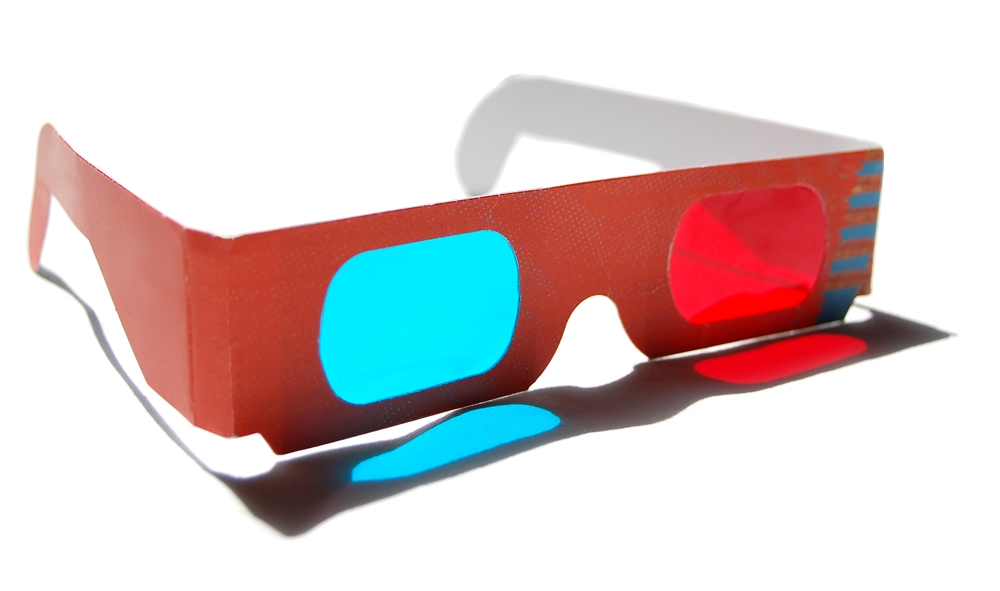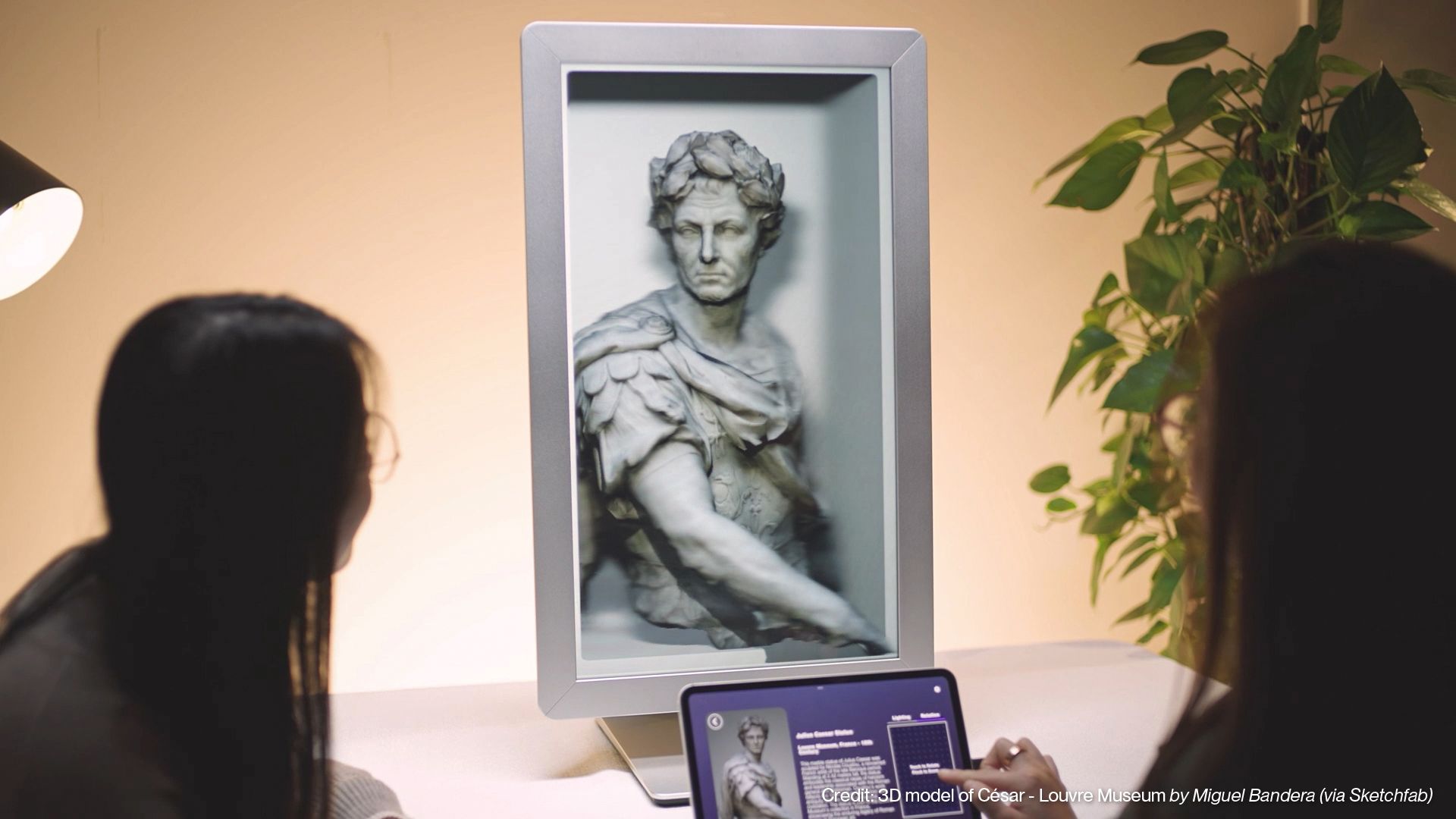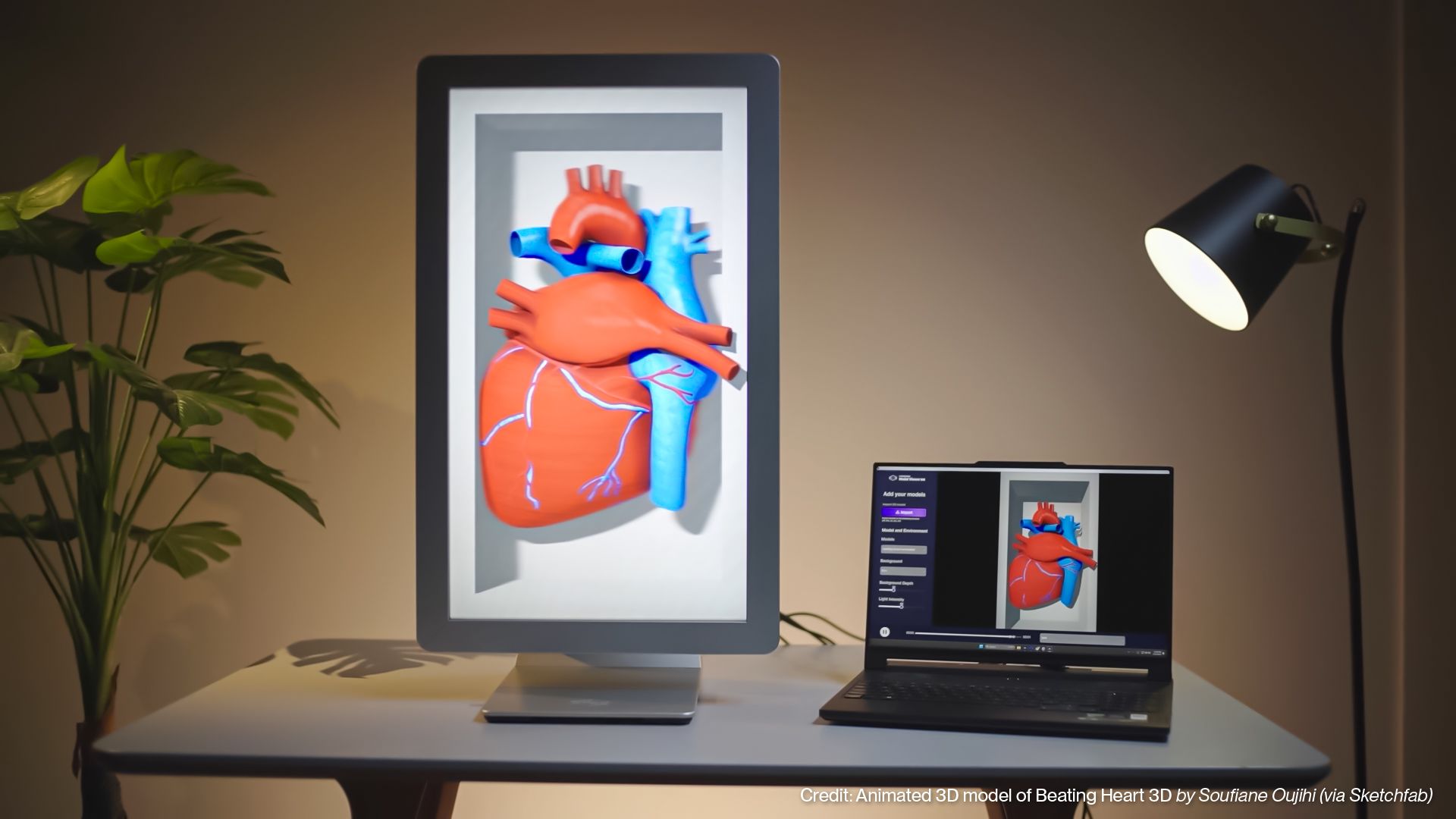The future has arrived: I tried the most advanced glasses-free 3D display yet
The Looking Glass 3D monitor feels so magical it shouldn't be real.

The Looking Glass' slick 27-inch 3D display monitor was just released this month. The company name makes reference to the classic Alice in Wonderland story, where the reader is taken on a journey that is quite beyond normal. Similarly, this new 3D display monitor can take both the viewer and the developer to new places as well.
Through the 3D Looking Glass
We have reached the point where, regardless of your age, we have all encountered some form of 3D imagery. By this, I mean 3D content that is displayed on what is essentially a 2D display. Most readers are probably familiar with the recent 3D revival that was ushered back into theatres in 2009 with James Cameron’s Avatar. And for quite a few years after that, it seemed like every film, certainly every family film, needed to be in 3D. This renaissance of 3D motion pictures has, like others before it, faded away. But there is little doubt it will return once again someday.
As advanced as 3D theatre technology had become in the last decade, it still required special glasses. No, not those Red/Blue filter types that first defined 3D cinema back in the 1950s. No, these new glasses were far more sophisticated. They allowed us to see full-spectrum colour, or at least far more than the red/blue filters allowed.

Over the years, the big headset glasses morphed into simple Ray-Ban-style frames. The running joke at the time was, “How long before we don’t need to wear any glasses?” And clearly, some folks, including the folks at Looking Glass, didn’t take that as a joke. They took it as a challenge.

Loving the Lenticular
Modern 3D uses a technology that is, essentially, based on something called lenticular optics. You have seen this for years. Think back to the last time you went on vacation to a popular tourist attraction. The Eiffel Tower, or Niagara Falls. Right there in the gift shop, on a rack next to the regular postcards, you probably saw 3D versions of the Eiffel Tower on the front of a postcard. As you moved your head left and right, the tower would “pop”. Or even more impressively, the water falling from Niagara could be seen to actually cascade. In other words, not just 3D, but it also offered limited animation as well.
If you dragged your fingertips across these postcards, you would feel ridges. These are the lenticular lenses that help deliver varying points of view to your left and right eyes. Of course, it is the variation between what each of our eyes sees that provides our brain the information it needs to generate that 3D effect.
The truly amazing thing about this technology is, of course, that it requires no eyeglasses. Some form of lenticular applications has been around for decades or even longer. But its quality and sophistication have continued to evolve.
Daily design news, reviews, how-tos and more, as picked by the editors.
Powerful New 3D
And evolve it has. Looking Glass, along with the modern 3D display industry, refers to this technology as “Light Field Display Technology”. When compared to older methods, Looking Glass’ LFDT technology is said to offer:
- The ability to better reproduce the distribution of light rays in a scene. This means more realism, bringing us another step closer to a photographic experience.
- Better simulate true depth perception, thus enhancing the 3D effect with things like greater depth perception. It can simulate up to a 16-inch depth from the camera’s point of view.
- It allows for multiple perspectives, up to 100. This means a wider and more useful field of view for audiences viewing the content, and up to a 53º viewing cone. So yes, viewers can spread out (a little) on that sofa.
Each of these items are important steps in bringing an enhanced realism to the screen. And to the viewer. (For those interested, Nature has a deeper and geekier dive into the technology)
The result is shockingly similar to the lenticular printing we already know, but had not been obtainable on a desktop display. And of course, being a digital display rather than a pre-printed card or poster, we can update the information at will, and thus drive it to display animations, and other evolving or “progressive” content.
But it gets even better. Since it is attached to a computer, we can drive it in an interactive fashion. Thus we can control the scene’s camera positions and angles, much the way we do in 3D video games. (And I would be shocked if this doesn’t come to the gaming world as prices drop in the future.)

Looking Glass Ships 27” Light Field Display
This month, Looking Glass added a lovely new 27-inch display unit to its existing list of mostly smaller displays. But they also offer both 32 and 64-inch options as well. The new unit is a sleek presentation that can be configured either horizontally or vertically. This helps the display to better adapt to a wide range of potential applications. Such as retail, B2B presentations, and scientific applications, as well for use in educational and museum settings.
It rocks a 5K resolution, or about 5120 x 2880 pixels, with a refresh rate of 60Hz @ 5K. On a 27-inch screen, that nets you a very high resolution and a razor-sharp screen, approximately 218 PPI (pixels per inch). Remember, it wasn’t that long ago that most monitors we used had a pixel density of 72 or 96 PPI. I’m sure this 3D technology benefits from the much higher pixel density.
The display’s press release states that it “projects an astonishing 16 inches of virtual depth, creating 3D experiences that captivate audiences and enhance visual communication for groups.” I will agree that the system delivers a very nice “stage” presence and space.
For my demonstration, I was treated to a display connected to an external touch screen controller. Behind that, I’m assuming, was a powerful computer. But recent software updates now allow it to be driven by an iPad, in addition to its existing Mac and Windows support.
Requirements for the new 27-inch unit are as follows:
PROCESSOR: | Intel i7 9th Gen (or newer) MacBooks (M1, M2, or M3 chips) (Ensure it supports the ports below.) iPad Air (M2) or iPad Pro (M4) |
CONNECTIONS: | 1x HDMI 2.1 connector, OR 1x DP 1.4 connector, OR 1x USB-C DP-Alt mode (must support 5120 × 2880 resolution) |
MEMORY: | 16GB RAM or more |
STORAGE: | 200GB or more |
GPU: | Nvidia RTX 2070 (or better) |
The Test Drive
Okay, let’s cut to what you want to know. What was it like? With all our photography and video tools, I have no way to show you how wonderful it is. The best description I can come up with is this: It makes me feel like I’ve just stepped into a Pixar movie.
The program they seem to prefer have their system work with is Unity 3D. They have a plugin for it. But it will also work with Unreal, Blender and others as well. There is also an entire development initiative behind this product, for a range of integrations, with CAD applications, for example. Their release states:
“CAD support to 3D Model Viewer: Architects, engineers, and professionals utilizing CAD software can now visualize their designs in immersive 3D using Looking Glass. Coming in July.”
But let’s hold up a minute. There’s a lot of good, but it isn’t perfection. We appear to still be a few years away from that. Much like its printed lenticular cousins, its apparent image sharpness isn’t great. There is a softness to the images that, if you want to use the technology, you will simply need to make peace with. The colours, while I did not see too many samples, looked full and nicely saturated. But be aware that it is doing this using 8 bits.
Personally, while I have no evidence to back this up, I believe that at some point in the future, 3D technology will be capable of producing tack-sharp images, with an even greater range of Z-plane depth. But until that day comes, we are able to effectively use what we have now for many applications.
For example, as a former 3D modeller (I created the FACT Model Disc Collection), the ability to visually see what you are creating in a 3D program – in 3D – is amazing. But at $10,000, this probably isn’t going to be an impulse buy. This is a professional tool, at professional prices. And you will likely need to have specific applications firmly in mind.
Looking Glass is based in Brooklyn, NY and Hong Kong. Learn more at Looking Glass' website.

Lance Evans is creative director of Graphlink Media (graphlink.com), a boutique creative marketing agency in NYC, with clients like Olive Garden, Miller Beer and AMEX. Lance recently launched "OPEN STUDIO | NY", a YouTube channel looking at production techniques for advertising and publishing shops. Visit it at youtube.com/@OpenStudioNY
You must confirm your public display name before commenting
Please logout and then login again, you will then be prompted to enter your display name.
